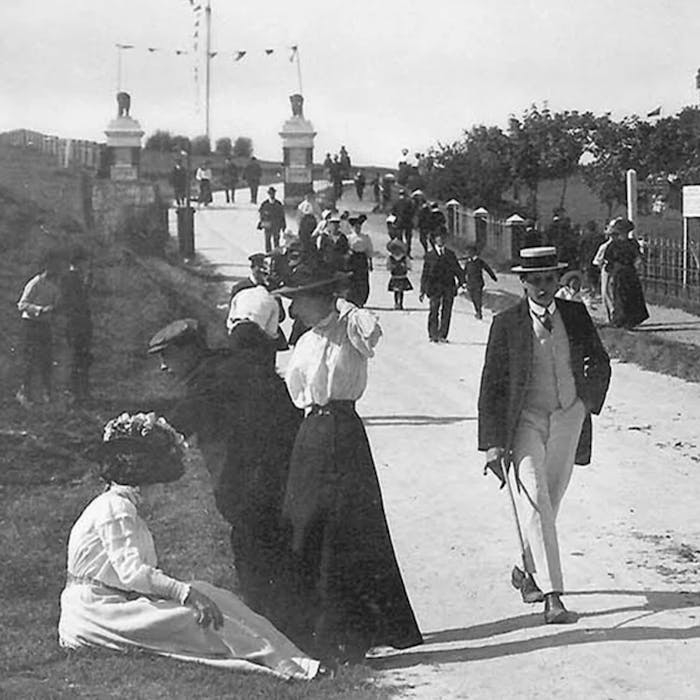
Devil's Dyke - the Edwardian heyday of a South Downs beauty spot
Devil's Dyke is a beauty spot on the South Downs behind Brighton. It is still popular today with sightseers, paragliders and walkers, but was once an Edwardian pleasure park with cable cars, cliff railway, and funfair.
Devil's Dyke, now owned by the National Trust, is the deepest dry valley in the world. Back in 1892, game hunter and traveller Mr H J Hubbard bought the Dyke Estate and set about turning Devil’s Dyke into a pioneering adventure park. He was aided by the arrival of a single track railway line in August 1887 which opened up from nearby Brighton to transport sightseers to the foot of the hill.
Merry-go-rounds, bicycle railways, two bandstands, an observatory, a camera obscura, coconut shies and fortune tellers festooned the hill. Devil's Dyke was a huge hit with Edwardians, with 30,000 people visiting on Whit Monday in 1893.
Perhaps the greatest mechanical feat achieved during Mr Hubbard’s tenure was the opening of Britain’s first aerial cable car in 1894. This ran across the Dyke and presented a view of the magnificent panoramas never seen before. Designed and built by William Brewer, it ran over the Dyke was made from 1,200 feet of cable, suspended precariously 230 feet above the valley floor on cast metal supports. Two cars, each carrying four passengers, were pulled across the ravine by a cable worked by an oil engine. Sadly, its popularity was short-lived, opening on the 13th October 1894 and carrying its last passengers around 1909.
Mr Hubbard was also responsible for the funicular railway which operated on the steep scarp slope on the north side of Dyke Hill. The Steep Grade Railway opened in 1897 and gave visitors to the Dyke the opportunity to descend to Poynings for a Sussex Tea without the arduous and time-consuming climb back up from the village. As with the cable car, the line never prospered, closing after only ten years or so.
The branch rail line from Brighton also succumbed some time later, ceasing operations on 31st December 1938, and the area gradually subsided to its current, slightly more peaceful, existence.
Further reading
Links to external websites are not maintained by Bite Sized Britain. They are provided to give users access to additional information. Bite Sized Britain is not responsible for the content of these external websites.
